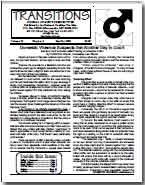
Globally, men die five years earlier than women and are 50% more likely to die between the ages of 15 and 60. In countries classified as ‘least developed’ and ‘less developed’ by the United Nations, adult mortality fell faster among women than among men between 1992 and 2012. In every part of the world, men’s health outcomes are substantially worse than women’s yet this inequality has as yet received little national, regional or global attention from health policymakers or healthcare providers.
A new organisation, Global Action on Men’s Health has therefore been launched today, at the start of International Men’s Health Week 2014, with an urgent call to improve the poor state of men’s health in every part of the world.
Backed by eight organisations based in four continents, Global Action on Men’s Health (GAMH) wants the World Health Organisation and other international public health bodies, as well as individual governments, to acknowledge the scale of the problems facing men and boys and to take sustained action to tackle them. This work should sit alongside continuing action to improve the health of women and girls.
GAMH believes that men’s shorter life expectancy reflects the failure of health policymakers and providers to tackle the social determinants of male health including men’s greater exposure to occupational hazards, their lower health literacy levels and behaviours associated with risk-taking (e.g. excessive alcohol consumption and illegal drug use).
Health services, particularly at the primary care level, are often difficult for men to access. Male mental health problems are also significantly under-diagnosed, contributing to a global male suicide rate that is double that of the female rate. Men who are particularly disadvantaged, such as those who are unemployed, gay, homeless, migrants or from certain ethnic minorities, are often at greater risk of poor health.
Only three countries – Australia, Brazil and Ireland – have to date attempted to improve men’s health through the adoption of national, male-centred strategies although it is not yet clear how many of their goals have actually been achieved. In 2011, the European Commission published a major statistical report on the state of men’s health in Europe which revealed many serious problems but has not been followed with any recommendations or an action plan.
Dr Anthony Brown, GAMH Chair and Secretary of the Australian Men’s Health Forum, said: “Any serious effort to improve public health must pay attention to the health needs of both sexes and take account of the differences between them. Tackling men’s health problems needs to be part of the response to the global epidemic of non-communicable diseases, such as cancer, diabetes and cardiovascular disease, which affect more men than women and at a younger age.
“Today, at the start of International Men’s Health Week 2014, GAMH is urging the WHO and other leading global public health organisations to develop policies and deliver services that take full account of men as well as women. We also want national governments to act now to tackle the problems facing men.”
GAMH specifically wants to see:
1. Action by WHO, starting with an expert symposium on men’s health followed by a report analysing the problems and recommending a range of solutions.
2. The inclusion of both women and men in efforts to reduce gender inequalities in health as part of the post-2015 sustainable development agenda.
3. Commitments by significantly more national governments to improve the health of men and boys followed by concrete and sustained action.
GAMH has today written to the Director-General of WHO, Dr Margaret Chan, urging action to tackle this major but under-recognised health inequality.


